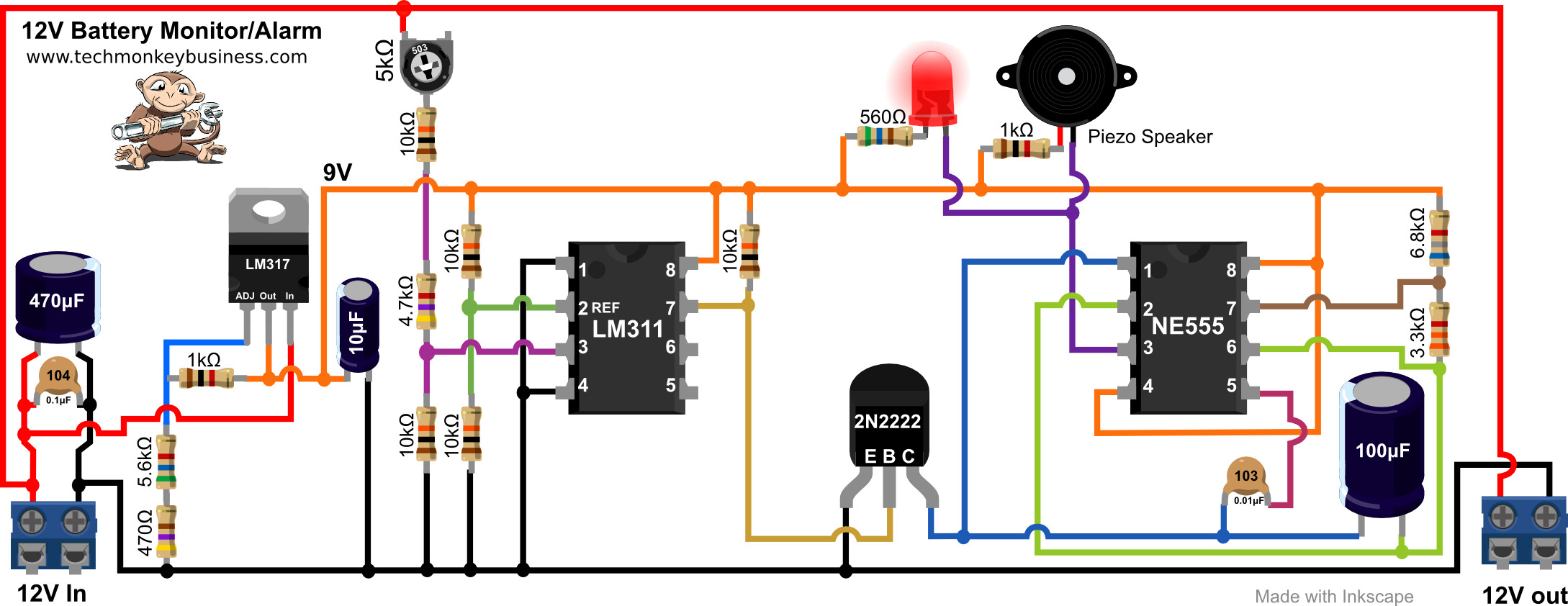
I then proceeded with calibrating the range of the analog input. Next, I located the nearest connection to the battery positive rail and connected my positive power input to it. Since the entire car chase is ground, I found the nearest screw and connected my ground to it.
12v battery monitor install#
I found the fuse box to be a safe and secure place to install my device.I first wrapped the device in heat resistant tape to cover any exported pin to withstand the engine heat.

I attached a long wire to the power input terminals to be able to connect them to the car battery.Īt the car, I opened the hood and located the fuse box. I then resumed with a typical Tasmota configuration. Make sure you select the sensor.bin version for the Analog input functionality. I then connected the D1 mini to my laptop and load the software. I did this by soldering a 1MΩ resistor to a 220KΩ resistor as shown here. To do that we can add another 1.22MΩ in series to get the total 1.44MΩ. To increase the 3.3v to 16v needed for the car battery, we need to increase R1 to 1.44MΩ. This the voltage within the 0-1 Volt that the ADC can tolerate.

The D1 mini can measure external voltage up to 3.3v by using a voltage divider using R1=220KΩ & R2=100KΩ. First, I started by removing the power plug and installed the smaller connector to make the hardware more compact. You will need a wemos d1 mini, a power shield and some resistors. I will show you how I assembled the hardware, loaded the software and installed the monitor in my car. Having the ability to monitor your car battery can prevent some unpleasant surprises. Please check the video description for links for the D1 Mini Power shield I used.


 0 kommentar(er)
0 kommentar(er)
